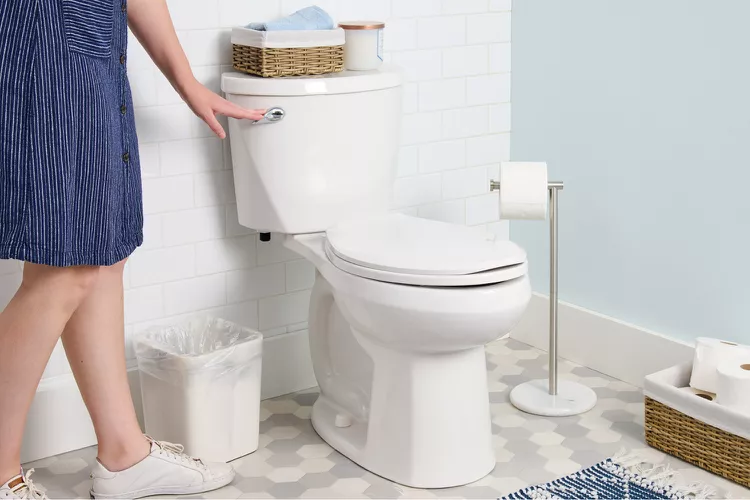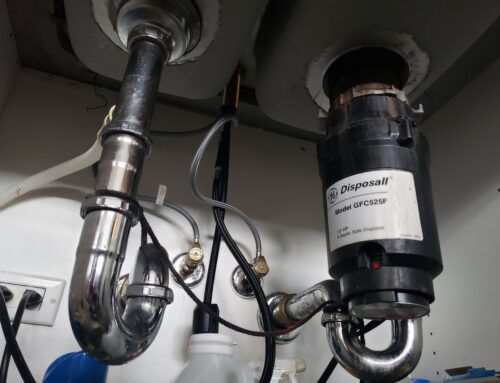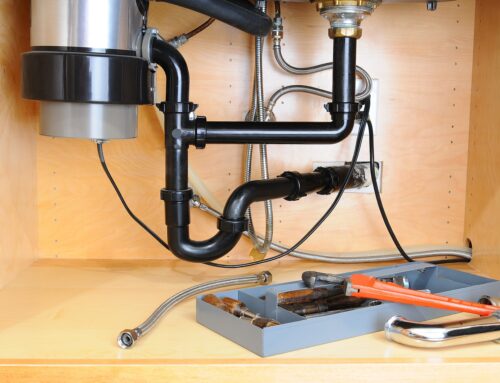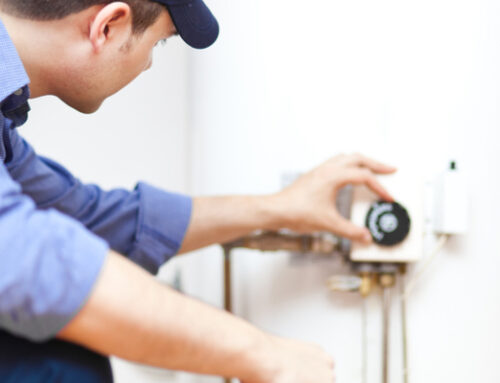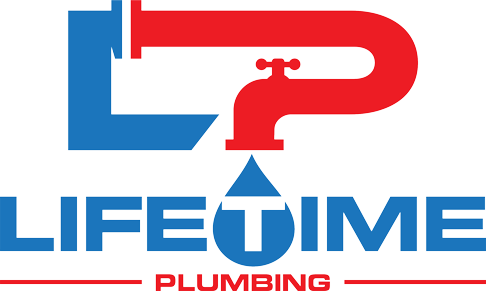Table of Contents
- 1 Types of toilets
- 2 One-Piece Toilets
- 3 Two-Piece Toilets
- 4 Wall-Mounted Toilets
- 5 Exploring Different Toilet Types in term of Styles and Designs
- 6 Considering Toilet Height, Bowl Shape, and Other Factors
- 7 Exploring Various Flush Systems for Toilets
- 8 Additional Features to Consider
- 9 Types of toilets: Conclusion
Types of toilets
Toilets play a vital role in every bathroom, serving an important purpose in our daily routines. In this blog post, we’ll explore various toilet options available in the market and provide guidance to help you select the best one for your needs. Choosing the right toilet is essential not just for comfort but also for style and water conservation. When making this choice, it’s crucial to consider factors like design, flushing mechanism, height, bowl shape, and additional features. A well-chosen toilet can improve the overall look of your bathroom while ensuring efficient performance. We’ll discuss the pros and cons of different toilet types and styles throughout this article, enabling you to make an informed decision that matches your preferences and requirements.
One-Piece Toilets
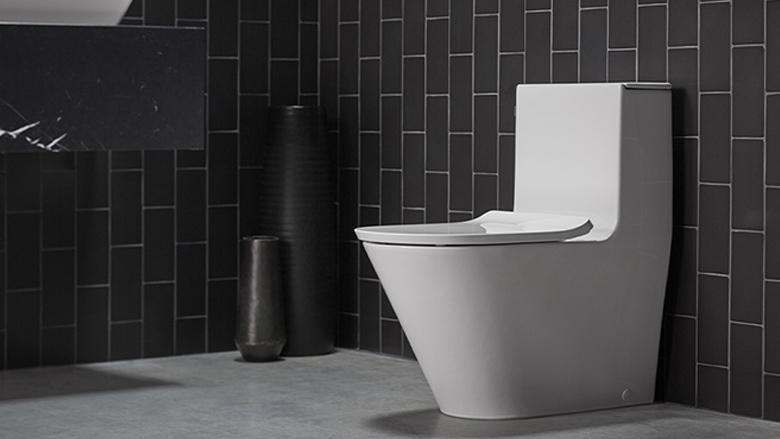
Definition and Design of One-Piece Toilets
One-piece toilets are the type of toilet that have the tank and bowl combined into a single unit. This means there are no gaps or seams between the tank and bowl like in traditional two-piece toilets. The result is a sleek and seamless design that is both aesthetically pleasing and easy to clean.
Advantages of One-Piece Toilets
- Easier to clean: With no gaps or crevices where dirt can hide, cleaning a one-piece toilet is a breeze.
- Modern design: The seamless look of a one-piece toilet adds a touch of elegance to any bathroom.
- Space-saving: One-piece toilets are often more compact than their two-piece counterparts, making them perfect for small bathrooms or powder rooms.
Disadvantages of One-Piece Toilets
- Higher cost: On average, one-piece toilets tend to be more expensive than two-piece toilets.
- Replacement inconvenience: If any part of the toilet gets damaged, you may need to replace the entire unit since the tank and bowl are integrated.
Recommended One-Piece Toilet Model with Brief Review
One highly recommended one-piece toilet model is the TOTO Ultramax II. Here’s why it stands out:
“The TOTO Ultramax II is a top choice when it comes to one-piece toilets. It not only looks great with its sleek design, but it also performs exceptionally well. The secret behind its powerful flush is TOTO’s Tornado Flush system, which uses dual nozzles to create a swirling motion that effectively cleans the bowl with each flush. Additionally, this toilet is WaterSense certified, meaning it meets strict criteria for water efficiency without compromising performance.”
Two-Piece Toilets
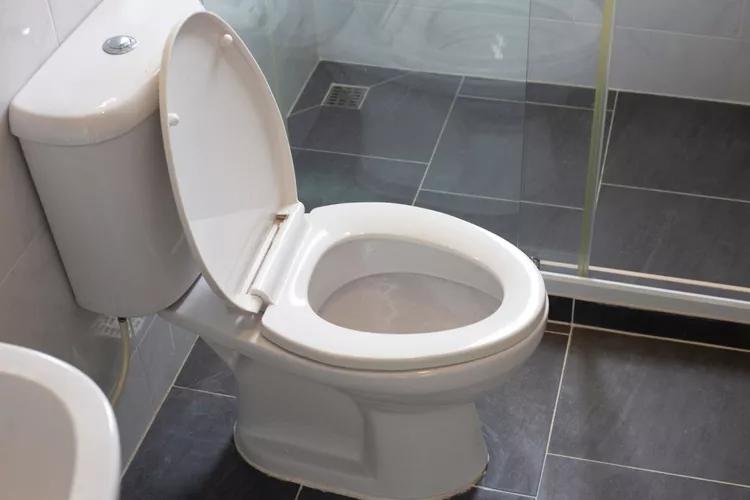
Two-piece toilets are the most common and traditional type of toilets found in households. They consist of a separate tank and bowl that are bolted together during installation. Here are some key points about two-piece toilets:
Definition and design
Two-piece toilets have a separate tank and bowl, with the tank positioned above the bowl. The tank contains the flushing mechanism and water supply, while the bowl holds the waste and connects to the drainage system.
Advantages of Two-Piece Toilets
- Cost-effective: Two-piece toilets are generally more affordable compared to other types.
- Easy maintenance: Since the tank and bowl are separate, repairs and replacements can be done individually if needed.
- Availability of options: There is a wide range of designs, styles, and colors available in two-piece toilets, allowing you to choose one that matches your bathroom decor.
Disadvantages of Two-Piece Toilets
- Cleaning challenges: The gap between the tank and bowl can be difficult to clean as dirt or debris may accumulate there.
- Bulkier appearance: Two-piece toilets tend to have a bulkier look due to the visible connection between the tank and bowl.
A recommended two-piece toilet model is the Kohler Cimarron. It features a comfort height seat that offers added accessibility and ease of use. The Cimarron also has an AquaPiston flushing technology that provides powerful flushing performance while using only 1.28 gallons per flush (gpf), making it water-efficient.
Overall, two-piece toilets are a practical choice for many households due to their affordability and variety of options available. However, they may require regular cleaning in hard-to-reach areas between the tank and bowl.
Wall-Mounted Toilets
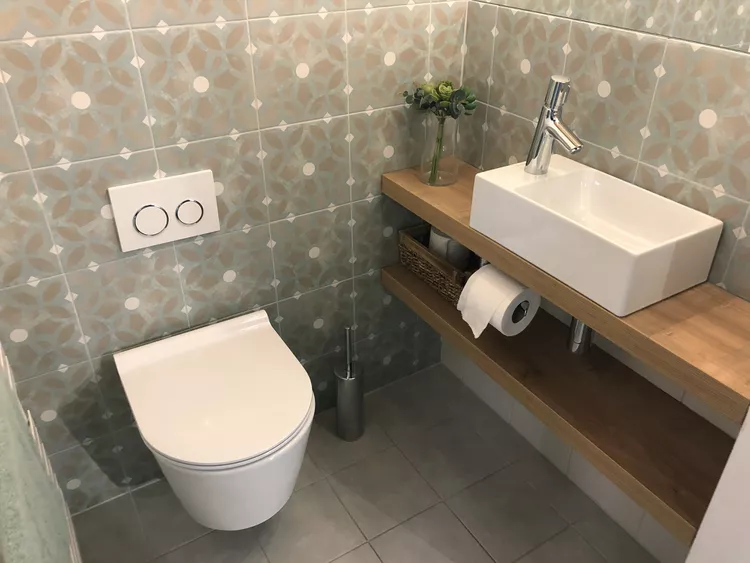
Wall-mounted toilets, also known as wall-hung toilets, are a sleek and modern option for any bathroom. Instead of sitting on the floor like traditional toilets, this type of toilets are mounted directly onto the wall, creating a floating effect.
Definition and Design of Wall-Mounted Toilets
- Wall-mounted toilets consist of a toilet bowl that is fixed to the wall with a concealed carrier system.
- The carrier system is installed within the wall and supports the weight of the toilet.
- The toilet tank is hidden behind the wall, giving the bathroom a clean and minimalist look.
Advantages of Wall-Mounted Toilets
- Space-saving: Wall-mounted toilets take up less floor space compared to traditional toilets, making them ideal for small bathrooms or powder rooms.
- Easy to clean: With no base or visible pipes, cleaning around a wall-mounted toilet is a breeze. The open space underneath allows for easy access to the floor, simplifying maintenance.
- Modern aesthetic: These toilets offer a contemporary and stylish look that can elevate the overall design of your bathroom.
- Adjustable height: The height of wall-mounted toilets can be customized during installation, providing added comfort and accessibility.
Disadvantages of Wall-Mounted Toilets
- Installation complexity: Installing a wall-mounted toilet requires professional expertise and proper structural support within the wall. It may involve additional construction work, which can increase installation costs.
- Limited design options: Due to the specific installation requirements, there may be fewer design choices available for wall-mounted toilets compared to other types.
Recommended Wall-Mounted Toilet Model
One highly recommended wall-mounted toilet model is the Toto Aquia Wall-Hung Dual Flush Toilet. This toilet offers a sleek design with powerful flushing performance. It features Toto’s Dual-Max flushing system, allowing you to choose between a full or partial flush, maximizing water efficiency. The Toto Aquia also comes with a SoftClose seat, which prevents slamming and provides added comfort.
Wall-mounted toilets are an excellent choice for modern bathrooms, providing space-saving benefits and a clean aesthetic. However, it’s essential to consider the installation process and costs associated with these toilets before making a final decision.
Exploring Different Toilet Types in term of Styles and Designs
In addition to the commonly known one-piece, two-piece, and wall-mounted toilets, there are several other toilet styles and designs available on the market. Let’s take a closer look at some of these options:
High-Level Toilets
Definition and Characteristics of High-Level Toilets
High-level toilets are a classic design that features a cistern mounted high on the wall. The cistern is connected to the toilet bowl via a long pipe, which allows for a powerful flush.
Advantages of High-Level Toilets
- The elevated cistern provides a strong gravity-assisted flush, ensuring efficient waste removal.
- The vintage aesthetic of high-level toilets adds a touch of elegance and charm to any bathroom decor.
- The elevated position of the cistern can help save space in small bathrooms, as it eliminates the need for a separate unit on the floor.
Disadvantages of High-Level Toilets
- Installation can be more complex than other toilet styles, as it requires proper positioning and secure mounting on the wall.
- Maintenance and repairs may be more challenging due to the elevated position of the cistern.
- High-level toilets tend to be more expensive compared to standard toilet designs.
High-level toilets offer a unique combination of functionality and aesthetics. Their powerful flush, space-saving design, and timeless appeal make them an attractive choice for those looking for a classic yet efficient toilet option.
Low-Level Toilets
Definition and Characteristics of Low-Level Toilets
Low-level toilets have a cistern positioned at a lower level compared to high-level toilets. The cistern is attached to the toilet bowl through a flush pipe. These toilets often have a traditional and classic look, making them suitable for vintage or period-style bathrooms.
Advantages of Low-Level Toilets
- Classic appearance suitable for traditional bathroom designs
- Typically easier to access the internal components for maintenance or repairs
Disadvantages of Low-Level Toilets
- Potentially more challenging installation due to the separate cistern placement
- Limited availability of modern features such as water-saving flush systems
Back-to-Wall Toilets
Back-to-wall toilets are a popular choice for modern bathrooms due to their sleek and minimalist design. These toilets are designed to be installed flush against the bathroom wall, creating a seamless and space-saving look. Here are some key points to consider:
Definition and Characteristics of Back-to-Wall Toilets
- Back-to-wall toilets have a concealed cistern that is hidden behind the wall, giving them a clean and streamlined appearance.
- The toilet pan sits directly on the bathroom floor, making it easy to clean around and ensuring stability.
- These toilets often come with a soft-close seat, adding to their comfort and convenience.
Advantages of Back-to-Wall Toilets
- The hidden cistern saves space and creates a more open and uncluttered bathroom environment.
- The sleek design of back-to-wall toilets makes them versatile and suitable for both contemporary and traditional bathroom styles.
- Cleaning is made easier as there are no hard-to-reach areas behind the toilet.
Disadvantages of Back-to-Wall Toilets
- Installation can be more complex compared to other types of toilets due to the need for concealed plumbing.
- Repair or maintenance work may require access to the concealed cistern, which could involve removing tiles or accessing the wall.
Back-to-wall toilets offer a stylish and space-saving solution for modern bathrooms. Their clean lines and concealed cistern make them a popular choice among homeowners looking to create a sleek and uncluttered bathroom design.
Wall-Hung Toilets
Wall-hung toilets, also known as wall-mounted toilets, are fixtures that you can mount onto your bathroom wall instead of placing them on the floor. These toilets have a sleek and modern appearance that can contribute to a contemporary bathroom design. The tank is hidden within the wall, creating a clean and minimalist look in your bathroom.
Advantages of Wall-Hung Toilets:
- Space-saving design makes it easier for you to clean the floor beneath the toilet
- You can adjust its height based on your personal comfort
- It has a modern and stylish appearance
Disadvantages of Wall-Hung Toilets:
- They are generally more expensive to buy and install
- You need a strong wall to provide proper support for the toilet
- Professional installation is necessary
Wall-hung toilets offer a unique aesthetic appeal and practical advantages for those looking to optimize space in their bathroom. However, it’s important to consider the structural requirements and budget implications before choosing this type of toilet for your home.
Considering Toilet Height, Bowl Shape, and Other Factors
Choosing the Right Toilet Height for Comfort and Accessibility
When selecting a toilet, one important consideration is the height of the fixture. Here’s a look at the differences between standard height and chair height toilets, along with their respective advantages and disadvantages.
Standard Height Toilets
Advantages
- Familiarity: Matches the height of most traditional toilets
- Suitable for households with individuals of varying ages and mobility
Disadvantages
- Might be uncomfortable for taller individuals or those with knee or back problems
Chair Height Toilets
Advantages
- Easier to use for taller individuals and those with mobility issues
- Offers a seating position similar to that of a standard chair
Disadvantages
- Might be too high for shorter individuals or children
Consider the specific needs of the users in your household to determine which toilet height would be the most comfortable and accessible for everyone.
Selecting the Perfect Bowl Shape for Your Needs
When choosing a toilet, it’s important to consider not only the height but also the bowl shape. The bowl shape can significantly impact your comfort and overall experience. Here are some key points to keep in mind:
Benefits of using an elongated bowl over a round bowl:
- Elongated bowls provide more space and comfort, especially for individuals with larger frames or mobility issues.
- The shape allows for better alignment and reduces the chance of accidental contact with the front rim.
- It is easier to clean an elongated bowl due to its larger surface area.
Introduction to compact elongated bowls and their space-saving advantage:
- Compact elongated bowls combine the benefits of both elongated and round bowls.
- They offer the space-saving advantage of a round bowl while providing the added comfort of an elongated bowl.
- These bowls are ideal for bathrooms with limited space, allowing you to have a comfortable toilet without compromising on floor area.
Apart from bowl shape, other factors like trapway design and toilet seat material should also be taken into consideration when choosing a toilet. By carefully considering these aspects, you can ensure that your toilet meets your specific needs and preferences.
Exploring Various Flush Systems for Toilets
Gravity-Flush Systems
Definition of gravity-flush systems
Gravity-flush systems, also known as siphonic flush systems, are the most common type of flush mechanism found in toilets. These systems use the natural force of gravity to create a siphon, pulling waste and water from the bowl into the drain.
How do gravity-flush systems work?
When you press the flush button, water stored in the tank rushes into the bowl. This sudden inflow of water creates a siphon effect that effectively empties both the bowl and the tank, carrying away waste through the drain.
Pros of gravity-flush systems
- Simple and reliable operation
- Quieter compared to other flush systems
- Less prone to mechanical failure
Cons of gravity-flush systems
- May not be as effective in removing solid waste compared to pressure-assisted systems
- Uses more water per flush compared to dual-flush or low-flow toilets
Gravity-flush systems are a popular choice for residential bathrooms due to their simplicity and effectiveness. However, advancements in technology have led to alternative flush systems that offer improved water efficiency and waste removal capabilities.
Dual-Flush Systems

When it comes to flush systems, another important aspect of toilets that can greatly affect their performance and water efficiency, dual-flush systems are gaining popularity. These systems offer users the flexibility to choose between two different flush options based on their needs, helping to conserve water and reduce utility bills.
What are dual-flush systems?
Dual-flush toilets are designed with two separate flushing options: a partial flush for liquid waste and a full flush for solid waste. This allows users to use less water when flushing liquid waste, as compared to traditional gravity-flush toilets that use the same amount of water for every flush.
How do dual-flush systems work?
The mechanism behind dual-flush toilets is simple yet effective. Typically, there are two buttons or levers on top of the toilet tank, with each button corresponding to a different flush volume. The smaller button activates the partial flush, which releases a reduced amount of water, while the larger button triggers the full flush, delivering a more powerful force of water for solid waste removal.
Pros of dual-flush systems
- Water-saving benefits: With dual-flush toilets, you have the ability to choose between a lower-volume flush for liquid waste and a higher-volume flush for solid waste. This can result in significant water savings over time, making it an environmentally friendly option.
- Cost-effective: By conserving water, dual-flush toilets can help reduce your monthly water bills.
- Versatility: The adjustable flushing options provide versatility for various waste types.
Cons of dual-flush systems
- Complexity: Some users may find the two-button system confusing or difficult to operate.
- Higher upfront cost: Dual-flush toilets typically cost more than standard gravity-flush toilets due to their advanced flushing mechanism.
Dual-flush systems offer a practical solution to minimize water wastage while maintaining effective waste removal. They are an excellent choice for individuals looking to reduce their environmental impact and save on water bills without compromising on toilet performance.
Pressure-Assisted Systems
Flush systems are another important aspect of toilets that can greatly affect their performance and water efficiency. One type of flush system is the pressure-assisted system.
Definition of pressure-assisted systems
Pressure-assisted toilets use air pressure to aid in flushing waste. These toilets have a sealed inner tank that contains pressurized air, which is released when the toilet is flushed. The force of the air helps to propel water into the bowl, resulting in a more powerful flush.
How do pressure-assisted systems work?
When you activate the flush handle, water from the supply line fills the tank and compresses the air inside. As the air pressure builds, it creates a strong burst of energy that pushes the water out with force. This high-pressure flush effectively clears waste from the bowl and helps prevent clogs.
Pros of pressure-assisted systems
- Powerful flush: Pressure-assisted systems provide a strong and efficient flush, ensuring thorough waste removal.
- Reduced clogging: The forceful flush helps prevent clogs by pushing waste down the drain more effectively.
- Water-saving: Despite their powerful flush, pressure-assisted systems often use less water per flush compared to older gravity-flush toilets.
Cons of pressure-assisted systems
- Noise: The sound produced during a pressure-assisted flush can be louder than that of gravity-flush toilets.
- Potential maintenance issues: Pressure-assisted systems may require more frequent maintenance due to their complex design and specialized parts.
Pressure-assisted systems are commonly found in commercial settings where high-performance flushing is required, but they can also be suitable for residential use, especially in households with a history of clogging issues or where water conservation is a priority.
Double-Cyclone Systems
Flush systems, like double-cyclone systems, are another important aspect of toilets that can affect their performance and water efficiency.
What are double-cyclone systems?
Double-cyclone flushing technology, also known as tornado or twin cyclone, uses a combination of gravity and centrifugal force to create a powerful flush. It features two nozzles instead of rim holes, which propel water more forcefully into the bowl.
How do double-cyclone systems work?
When the toilet is flushed, water is released through two nozzles at high speed, creating a dual cyclone effect that efficiently removes waste from the bowl.
Pros of double-cyclone systems:
- Efficient waste removal
- Less prone to clogging
- Quieter operation compared to pressure-assisted systems
Cons of double-cyclone systems:
- Higher initial cost
- Limited availability of compatible parts for repairs
Double-cyclone systems offer efficient flushing and reduced water usage, making them a popular choice for environmentally-conscious consumers.
Additional Features to Consider
Bidet Toilets
Bidet toilets are innovative fixtures that combine the functions of a toilet and a bidet, offering enhanced hygiene and comfort. These advanced toilets come with a built-in bidet feature that allows for gentle cleansing with water, replacing the need for toilet paper. Some key features include:
- Built-in bidet: Bidet toilets are equipped with a nozzle or spray arm that emits a gentle stream of water for personal cleansing.
- Adjustable settings: Users can customize the water pressure, temperature, and spray pattern for personalized comfort.
- Air-drying function: Advanced bidet toilets may include an air-drying feature, eliminating the need for traditional drying methods.
- Heated seat: Many bidet toilets offer a heated seat option for added comfort during use.
- Automatic deodorizer: Some models are designed with built-in deodorizing systems to maintain a fresh bathroom environment.
Benefits of Bidet Toilets
Bidet toilets offer a range of benefits, including:
- Improved cleanliness: The use of water for cleansing is considered more effective in removing bacteria and reducing the risk of infections compared to using toilet paper alone.
- Reduced environmental impact: By decreasing reliance on toilet paper, bidet toilets contribute to the conservation of natural resources and reduction in waste production.
- Enhanced comfort: Features like heated seats and adjustable settings allow users to create a personalized and comfortable bathroom experience.
Considerations for Bidet Toilets
Before investing in a bidet toilet, there are a few factors to consider:
- Installation and maintenance: Bidet toilets may require professional installation due to their complex design and plumbing requirements. Additionally, regular maintenance is necessary to ensure proper functioning.
- Power source: Some features of bidet toilets, such as heated seats and air-drying functions, rely on electricity. It’s important to check if there are power sources available near the toilet area or if electrical work needs to be done.
- Cost: Bidet toilets can be more expensive than traditional toilets due to their advanced features. It’s essential to determine your budget and compare prices before making a decision.
Overall, bidet toilets provide a luxurious and hygienic bathroom experience, catering to individuals seeking modern conveniences and sustainable alternatives to traditional toileting practices.
Upflush Toilets

Upflush toilets, also known as macerating toilets, are a unique type of toilet that differs from traditional gravity-flush models. These toilets are designed to handle waste differently, making them suitable for locations where installing a conventional toilet might be challenging.
Key Features and Benefits of Upflush Toilets:
- Macerating System: Upflush toilets utilize a macerator pump to break down waste and toilet paper into a slurry, which is then pumped upward to the main sewer line.
- Versatile Installation: Due to their macerating system, upflush toilets can be installed in basements, below sewer lines, or in other areas where traditional plumbing is not feasible.
- Space-Saving: These toilets are ideal for adding a bathroom to a space without major construction or breaking through concrete floors.
- Self-Contained Units: Many upflush toilets come as complete units with the pump and tank included, simplifying installation.
Some upflush toilets may also come with additional features for added functionality and convenience, such as self-cleaning capabilities or integrated bidet functions.
When considering your options for toilet installation in unconventional spaces or areas with limited access to traditional plumbing, upflush toilets offer an innovative solution that combines efficiency with practicality.
Composting Toilets
Composting toilets are a unique and eco-friendly option for those looking for sustainable waste management solutions. These toilets use the natural process of decomposition to turn human waste into nutrient-rich compost.
Definition and Design
Composting toilets are designed to separate solid waste from liquid waste. They typically have two compartments, one for solids and one for liquids. The solid waste compartment contains organic material, such as sawdust or coconut coir, which helps facilitate the composting process.
Advantages of Composting Toilets
- Environmentally Friendly: Composting toilets greatly reduce water consumption and eliminate the need for traditional sewage systems, making them an excellent choice for off-grid or environmentally sensitive areas.
- Nutrient-Rich Compost: The resulting compost from a composting toilet can be used as fertilizer for gardens or landscaping.
- Low Maintenance: Once properly set up, composting toilets require minimal maintenance and can operate efficiently for extended periods without emptying.
Disadvantages of Composting Toilets
- Initial Setup: Installing a composting toilet may require some additional plumbing work and ventilation setup.
- Learning Curve: Proper use and maintenance of a composting toilet may take some time to learn, especially for those unfamiliar with this type of system.
- Odor Management: While modern composting toilets are designed to minimize odors, proper management is essential to prevent any unpleasant smells.
Composting toilets offer a sustainable and alternative solution to traditional flush toilets. They are particularly popular in areas where water resources are scarce or where there is no access to sewer systems. However, it’s important to note that composting toilets may not be suitable for everyone’s needs and preferences.
Self-Cleaning Toilets
Self-cleaning toilets are a convenient solution for those who want to spend less time cleaning their bathroom fixtures. With the help of modern technology, these toilets are able to keep themselves clean without much effort from the user. Here are some of the features that make self-cleaning toilets stand out:
- Automatic Cleaning Function: After each use, self-cleaning toilets will automatically clean the bowl using water and cleaning solutions.
- Antimicrobial Surface Coating: To prevent the growth of bacteria, mold, and mildew, many self-cleaning toilets have a special coating on their surfaces.
- Hands-Free Operation: Some models of self-cleaning toilets have features like touchless flushing and lid opening/closing, making them even more convenient and hygienic.
These toilets are especially beneficial for people who value cleanliness and want to minimize the amount of time spent on maintenance tasks. For those looking for extra comfort, there are also self-cleaning toilets available with additional features such as odor control, UV-light sanitization, and built-in bidet functions.
Types of toilets: Conclusion
When it comes to choosing the right toilet for your bathroom, there are several factors to consider. By carefully evaluating your specific needs and preferences, you can select a toilet that combines comfort, style, efficiency, and good flushing performance.
Remember these key points when making your decision:
Comfort
Consider the height of the toilet, whether standard or chair height, to ensure optimal comfort and accessibility.
Style
Choose a bowl shape that suits your preference, such as an elongated bowl or compact elongated bowl for space-saving advantages.
Efficiency
Look for toilets with water-saving features like low-flow systems that use 1.6 gallons per flush or even less. This not only helps conserve water but also reduces your utility bills.
Flushing Performance
Different flush systems offer varying levels of power and efficiency.
- Gravity-flush systems are reliable and quiet.
- Dual-flush systems allow for water-saving options.
- Pressure-assisted systems provide a powerful flush but can be noisy.
- Double-cyclone systems are eco-friendly and efficient.
By considering these factors and exploring the various types of toilets available on the market, you can make an informed decision that meets your specific requirements.
If you need any further assistance in selecting or installing the perfect toilet, don’t hesitate to contact our proffesional plumbers at Lifetime Plumbing. We’re here to help you find the ideal toilet that will enhance your bathroom experience for years to come.
More Posts You May Find Interesting
Table of Contents
- 1 Types of toilets
- 2 One-Piece Toilets
- 3 Two-Piece Toilets
- 4 Wall-Mounted Toilets
- 5 Exploring Different Toilet Types in term of Styles and Designs
- 6 Considering Toilet Height, Bowl Shape, and Other Factors
- 7 Exploring Various Flush Systems for Toilets
- 8 Additional Features to Consider
- 9 Types of toilets: Conclusion

